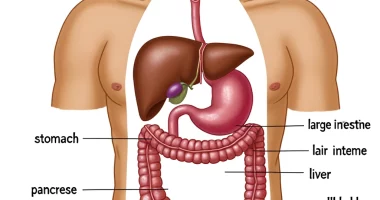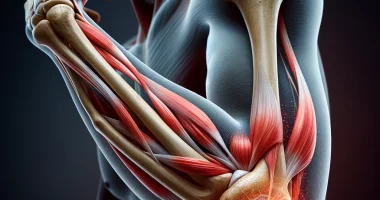Brugada syndrome
Definition
Brugada syndrome is a genetically determined cardiac condition characterized by various heart abnormalities that result in a dramatically increased risk of sudden cardiac death. Symptoms of this condition include attacks of paroxysmal tachycardia, syncope, atrial fibrillation, and life-threatening ventricular fibrillation, most often occurring during sleep. Diagnosis of Brugada syndrome is made based on the characteristic symptom complex, electrocardiographic data, and the study of hereditary history; molecular genetic methods determine some forms of pathology.
General information
Brugada syndrome is a group of genetic disorders that lead to changes in the ionic permeability of cardiomyocyte membranes, resulting in abnormalities of rhythm and conduction, creating an increased risk of sudden cardiac death. It has been established that Brugada syndrome is an inherited condition with a presumably autosomal dominant transmission mechanism; several genes have been identified as mutations that can cause this disease.
According to some data, almost half of all cases of sudden cardiac death in the world are caused by this pathology. The prevalence of Brugada syndrome varies in different regions of the world. In the countries of America and Europe, it is approximately 1:10 000, while in African and Asian countries, this disease is more common, with 5-8 cases per 10,000 people. Brugada syndrome affects men about eight times more often than women; manifestations of the pathology occur at different ages, but most often, the pronounced symptoms are observed in 30-45 years of age.
Reasons
The reason for the development of disorders in Brugada syndrome is the pathologic function of cardiomyocyte ion channels, mainly sodium and calcium. Their defect, in turn, is caused by mutations of genes encoding ion channel proteins. The methods of modern genetics have been able to reliably identify six major genes, the lesion of which leads to the development of Brugada syndrome; with respect to several more, there is suspicion, but it lacks the necessaryevidence base. A classification of this condition, including six forms of the disease (BrS), has been constructed.
Pathogenesis
The pathogenesis of disorders in any form of Brugada syndrome is approximately the same – due to changes in the permeability of the cardiomyocyte membrane for sodium ions, there is a violation of the transmembrane potential and related characteristics of excitable tissues: excitability, contractility, excitation transmission to surrounding cells. As a result, there are blockades of cardiac conduction pathways (bundles of His) and tachyarrhythmias, which intensify with increasing vagal influences (during sleep). The severity of symptoms in Brugada syndrome depends on the proportion of affected sodium channels. Some drugs that can inhibit cardiac ion channels can aggravate the manifestations of the disease.
Symptoms
The age of appearance of the first signs of Brugada syndrome varies significantly from patient to patient – cases of this pathology have been registered in children 3-4 years old, as well as in older adults. One of the first manifestations of the pathology is changes in the electrocardiogram in the absence of other clinical symptoms, so this disease is often detected accidentally. In most cases, pronounced symptoms of Brugada syndrome occur at the age of 30-45 years; this is preceded by an asymptomatic period of 10-12 years, during which the only sign of pathology is changes on the ECG.
Usually, patients with Brugada syndrome complain of unreasonable dizziness, fainting, and frequent attacks of tachycardia, especially at night or during daytime rest. Sometimes, there is an abnormal reaction to the administration of some drugs – first-generation antihistamines, beta-blockers, and vagotonic agents. Their use in Brugada syndrome can be accompanied by an increase in side effects, as well as palpitations, fainting, a decrease in blood pressure, and other negative manifestations. No other symptoms are detected in this disease, which explains the rare appeal of patients to a cardiologist or other specialists – in some cases, the manifestations of Brugada syndrome are quite rare and weakly expressed. Nevertheless, this does not reduce the risk of sudden cardiac death due to this pathology.
Diagnosis
Electrocardiographic techniques, study of the patient’s hereditary history, and molecular genetic analysis are used to determine Brugada syndrome. This disease can be suspected in the presence of syncopal phenomena (dizziness, fainting) of unclear origin and complaints of sudden attacks of tachyarrhythmias. Changes in the electrocardiogram in Brugada syndrome can be determined against the complete absence of clinical symptoms of the disease. In this case, cardiologists distinguish three main types of changes on the ECG, slightly differing from each other. The typical picture of the electrocardiogram in Brugada syndrome is reduced to ST-segment elevation above the isoelectric line and a negative T-wave in the right thoracic leads (V1-V3). There may also be signs of right bundle branch block, Holter monitoring reveals paroxysms of a tachycardia or atrial fibrillation.
As a rule, the hereditary history of patients with Brugada syndrome is aggravated – among relatives or ancestors, there are cases of fatal outcomes from heart failure, death in sleep, or sudden cardiac death. This fact and the presence of the above symptoms and ECG changes give grounds for molecular genetic diagnosis. Currently, geneticists in most clinics and laboratories determine the Brugada syndrome is caused only by mutations of SCN5A and SCN4B genes (types 1 and 5 of the pathology), for the other forms of genetic diagnosis methods have not yet been developed. This condition should be differentiated from the body’s reaction to the intake of certain drugs, chronic myocarditis, and other cardiac pathologies.
Treatment for Brugada syndrome
There are no specific methods of treatment for Brugada syndrome at the moment, so they are limited only to controlling the manifestations of this disease, as well as the prevention of life-threatening attacks of tachyarrhythmias and fibrillations. Amiodarone is most widely used for this condition; disopyramide and quinidine are used less frequently. However, drug therapy in Brugada syndrome in some cases is ineffective, the only reliable means of preventing arrhythmias and sudden cardiac death in this case is implantation of a cardioverter-defibrillator. Only this device can assess the patient’s myocardial function and, in case of pathological and life-threatening changes in the heart rhythm, bring it back to normal by means of an electrical discharge.
Many traditional antiarrhythmic drugs are contraindicated in Brugada syndrome, as they inhibit the activity of sodium channels of cardiomyocytes and increase the manifestations of pathology. Suppose there is a family history of this condition or a history of sudden cardiac death in the family. In that case, regular ECG studies should be performed to diagnose the condition as early as possible.
All these treatment options are available in more than 530 hospitals worldwide (https://doctor.global/results/diseases/brugada-syndrome). For example, Implantable cardioverter-defibrillator implantation (ICD) can be done in 34 clinics across India for an approximate price of $14K (https://doctor.global/results/asia/india/all-cities/all-specializations/procedures/implantable-cardioverter-defibrillator-implantation-icd).
Prognosis and prevention
The prognosis of Brugada syndrome is uncertain, as the degree of severity of the disease symptoms is very variable and depends on several factors. The prognosis is relatively favorable in the presence of only electrocardiographic manifestations of pathology without pronounced clinical symptoms. If Brugada syndrome is accompanied by loss of consciousness and arrhythmic attacks – without the installation of a cardioverter-defibrillator, the risk of sudden cardiac death increases many times. With this device, the prognosis is slightly improved because the device can correct pathologic changes in heart rhythm around the clock.

